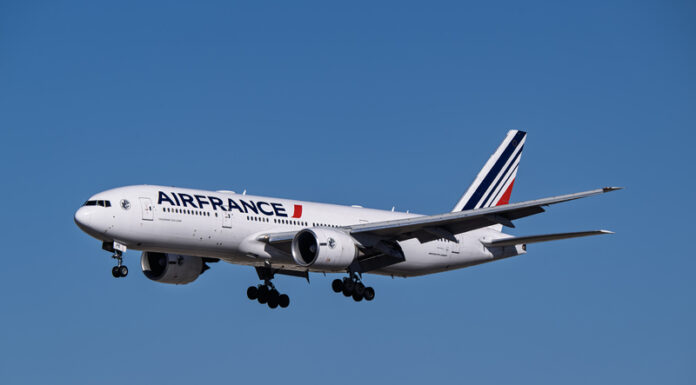Barbara Dipoli, 53, of Topeka, Kansas, died while aboard Air France flight AF334 from Paris to Boston on January 14, 2025, despite immediate intervention from an onboard doctor and trained crew members. The flight arrived at Boston Logan International Airport’s Gate E6 approximately 16 minutes behind schedule, landing just before 5 p.m. local time after the nearly eight-hour journey.
“Air France confirms that a passenger on flight AF334 from Paris-Charles de Gaulle to Boston on January 14, 2025, suffered a heart attack during the flight,” an airline spokesperson said in a statement. “Despite the intervention of a doctor on board, mobilized and assisted by the crew, the customer could not be rescued.”
Emergency crews were dispatched to meet the Airbus A350 aircraft upon its arrival. The Massachusetts State Police Detective Unit responded to what they classified as an “unattended death,” meaning the person passed away without medical professionals present at the time of death. According to media reports, troopers and detectives were seen examining the aircraft after landing. The matter remains under investigation, with authorities carefully reviewing the circumstances surrounding the death.
The airline addressed the emergency response protocols in their statement: “Air France reminds that its crew members are regularly trained to handle these kinds of situations. “Air France regrets this sad event and expresses its sincere condolences,”
Medical emergencies during flights are more common than many realize. According to the Centers for Disease Control and Prevention aviation data, such incidents occur on approximately one in every 604 flights. Of these cases, 90% of aircraft continue to their planned destination, while 10% require diversions for serious medical issues such as cardiac arrest, chest pain, or possible strokes.
Statistics from U.S. aviation authorities reveal that approximately 44,000 flights annually experience some form of medical event. The most frequently reported medical situations include fainting, gastrointestinal issues, respiratory problems, neurological issues, and seizures. Cardiac events, while less common, often present the highest risk to passengers. The overall death rate for in-flight medical emergencies remains at approximately 0.3%.
This incident follows several recent aviation medical emergencies, including a high-profile case in October 2024 involving Turkish Airlines. During that flight, pilot İlçehin Pehlivan, 59, collapsed while operating a 12-hour journey from Seattle to Istanbul. Flight tracking website FlightRadar24 documented the aircraft flying north over Canada before turning around over Baffin Island for an emergency landing at New York’s JFK airport.
“After an unsuccessful attempt to give first aid, the flight crew of another pilot and a co-pilot decided to make an emergency landing, but he died before landing,” Turkish Airlines reported on social media. Pehlivan, who had served with the airline since 2007, had successfully passed his medical examination in March 2024.
Aviation experts note that while medical emergencies can occur on any flight, airlines maintain rigorous training programs for crew members to handle such situations. The presence of medical professionals among passengers, as in both recent cases, provides additional support during inflight emergencies, though outcomes cannot always be predicted.








